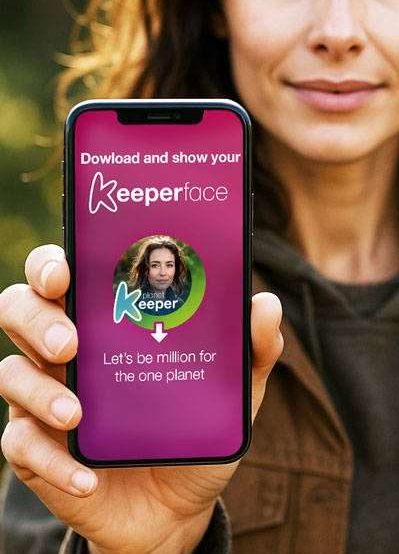Introduction
As the International Seabed Authority (ISA) stands at the helm, tasked with navigating the murky waters of seabed resource management, its dual role of advancing commercial interests while safeguarding marine ecosystems has never been more tested. Emerging technologies promise minimized ecological footprints, yet the scientific community continues to sound alarms over potentially irreversible damages. This article delves into the intricate dance between exploitation and conservation, unpacking the stakeholder dynamics and technological developments that define deep-sea mining today.
Regulating the Unseen Frontier: The Role of ISA
Dominated by discussions on environmental sustainability and economic benefits, the ISA’s journey through regulatory frameworks is fraught with challenges. Despite overseeing 30 exploration contracts, the body missed its July 2023 deadline to establish robust exploitation regulations, leaving a critical gap in governance as exploration edges closer to actual mineral extraction. Scheduled to finalize its Mining Code by 2025, ISA remains under intense scrutiny from both environmental groups and industry stakeholders. Experts argue that without stringent guidelines and transparent practices—elements currently perceived as inadequate—the potential for unchecked environmental harm could escalate drastically.
Technological Promises vs. Environmental Protections
On the technological front, companies are innovating to alleviate some concerns associated with deep-sea mining. Developments aimed at reducing sediment plumes and integrating advanced environmental monitoring tools reflect a proactive approach. However, such advances have not fully addressed concerns about low-frequency noise and light pollution. Moreover, scientists emphasize a troubling lack of data on long-term ecological impacts like disturbed carbon sequestration processes, which are crucial in mitigating global climate change.
Balancing Acts: Economic Incentives and Environmental Ethics
The economic narrative around deep-sea mining is compelling; proponents highlight its potential to supply key materials for essential technologies like EV batteries in a “greener” manner than traditional mining. Yet, this perspective is increasingly clashing with environmental ethics and scientific caution urging for precautionary pauses until more comprehensive impact assessments emerge. With habitats potentially taking centuries to recover from disturbances, the dilemma remains: can immediate economic benefits justify long-term ecological costs?
Voices from All Sides: Stakeholder Perspectives
From government representatives pushing for rapid development to conservationists advocating for moratoriums, voices across the spectrum bring varied perspectives to the table. Recent discussions reveal a growing consensus around adopting precautionary principles, yet disagreements on implementation persist. Industry stakeholders argue these delays stifle innovation and economic growth, highlighting a significant divide in priorities.
KEY FIGURES
- The International Seabed Authority (ISA) currently oversees more than 30 exploration contracts with 22 contractors for deep-sea mineral sites beyond national jurisdiction, covering 54% of the world’s oceans (Source: ISA official data) [5].
- The July 2023 deadline for adopting exploitation regulations by the ISA was missed, raising the possibility that mining applications could be evaluated without finalized regulations [1].
- The ISA aims to finalize its Mining Code by the 30th session in 2025, with emphasis on environmental protection, benefit-sharing, and transparency [2].
- The Enterprise, intended as the ISA’s vehicle for equitable benefit-sharing, remains non-operational, meaning benefits currently come only from royalties paid by contractors [5].
RECENT NEWS
- January 2025: Eight contractors expressed concerns to the ISA Council about the pace and content of regulatory development, emphasizing the need to balance commercial interests with sustainability [2].
- December 2024: New ISA Secretary-General Leticia Carvalho faces pressure to restore trust and finalize regulations amid allegations of previous corruption and environmental concerns [3].
- July 2025: ISA celebrates 30 years, highlighting its role in managing seabed resources for the “shared benefit of all humankind” and its mandate to protect the marine environment [4].
STUDIES AND REPORTS
- A December 2024 Nature article highlighted that the current regime may lead to simultaneous exploitation on adjacent large mining sites, increasing environmental harm, while the lack of finalized benefit-sharing mechanisms raises equity concerns for developing states [5].
- Scientific consensus remains that acceptable environmental harm levels are undefined, with many experts calling for precautionary pauses until more is understood about sediment plumes, noise, light pollution, and centuries-long ecosystem recovery [1].
- Independent research stresses the risk of disrupting carbon sequestration in deep-sea sediments, with potential global climate implications, and highlights that nodule habitats recover over centuries, not decades [1].
TECHNOLOGICAL DEVELOPMENTS
- Mining companies are developing technologies to extract polymetallic nodules with minimized sediment plumes, but effective mitigation of low-frequency noise and light pollution remains a challenge (industry sources, ongoing ISA discussions) [2].
- Innovations in remote monitoring and environmental impact assessment tools are being integrated into ISA’s capacity-building programs to improve real-time ecosystem protection during exploration and potential exploitation phases [2].
- Lifecycle assessments comparing deep-sea mining metals with recycled and redesigned battery materials emphasize the need for circular economy approaches alongside technological progress in mining [1].
MAIN SOURCES
-
- https://www.pew.org/en/research-and-analysis/articles/2024/01/29/deep-sea-mining-regulations-remain-far-from-complete – Analysis of the incomplete regulatory framework and environmental concerns.
- https://www.isa.org.jm/faq-for-media/ – Official ISA statements on Mining Code status, priorities, and contractor relations.
- https://www.ehn.org/deep-sea-mining-regulations-face-delays – Reporting on ISA leadership changes and regulatory delays.
- https://news.un.org/en/story/2025/07/1165464 – UN News article on ISA’s 30th anniversary and mandate.
- https://www.nature.com/articles/s44183-024-00098-y – Scientific review of ISA’s regulatory challenges and environmental/equity impacts.
This synthesis reflects the latest authoritative information as of mid-2025. The ISA remains the central regulator of deep-sea mining, but key regulatory frameworks are still incomplete, with significant scientific uncertainty about acceptable environmental risks. Many stakeholders advocate for a precautionary pause until more robust protections and equitable benefit-sharing mechanisms are in place. Technological advances are ongoing but have not yet resolved core environmental impact challenges.
Other references:
pew.org – Deep-Sea Mining Regulations Remain Far From Complete
isa.org.jm – FAQs – International Seabed Authority
ehn.org – Deep-sea mining regulations face delays – EHN
news.un.org – Deep dive into the International Seabed Authority: Why it matters now
nature.com – The struggle at the International Seabed Authority over deep sea …
sciencedirect.com – Source
earth.org – Source
congress.gov – Source
greenpeace.org.uk – Source
wwf.panda.org – Source
oceanfdn.org – Source
govinfo.gov – Source
nature.com – Source
theewastecolumn.com – Source
pwonlyias.com – Source
commondreams.org – Source
federalregister.gov – Source
npr.org – Source



